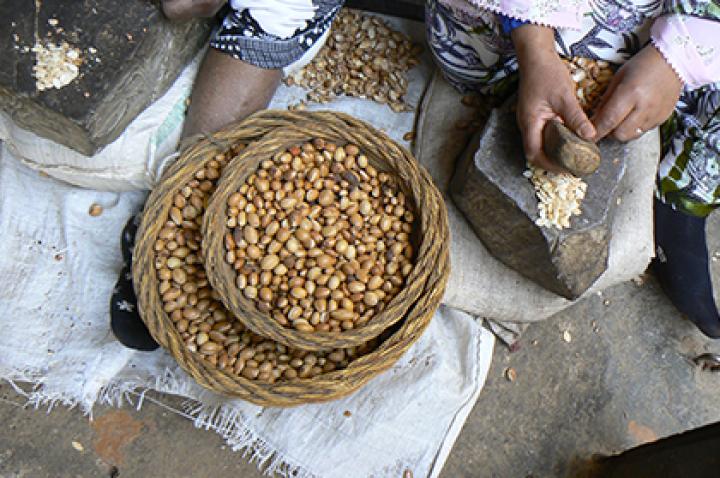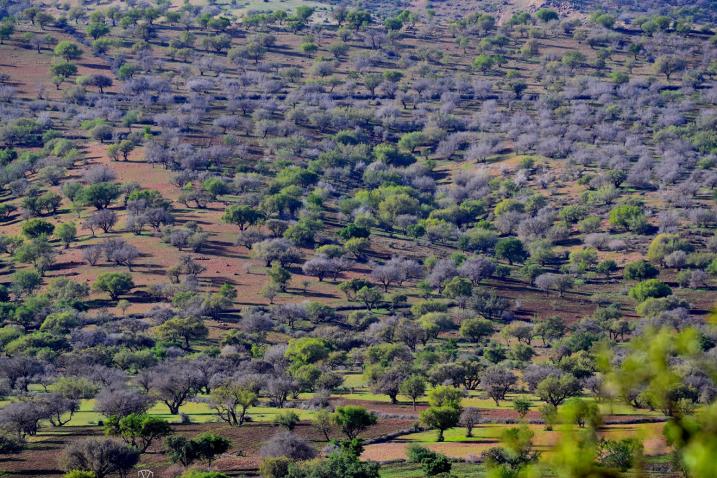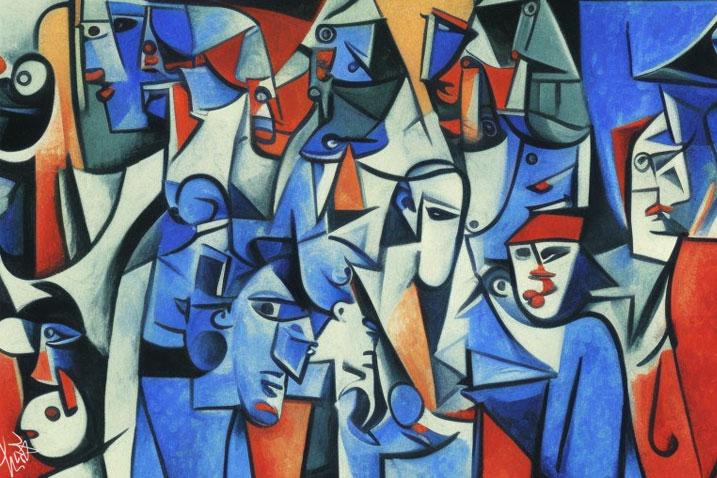International Day of Argania | United Nations (original) (raw)
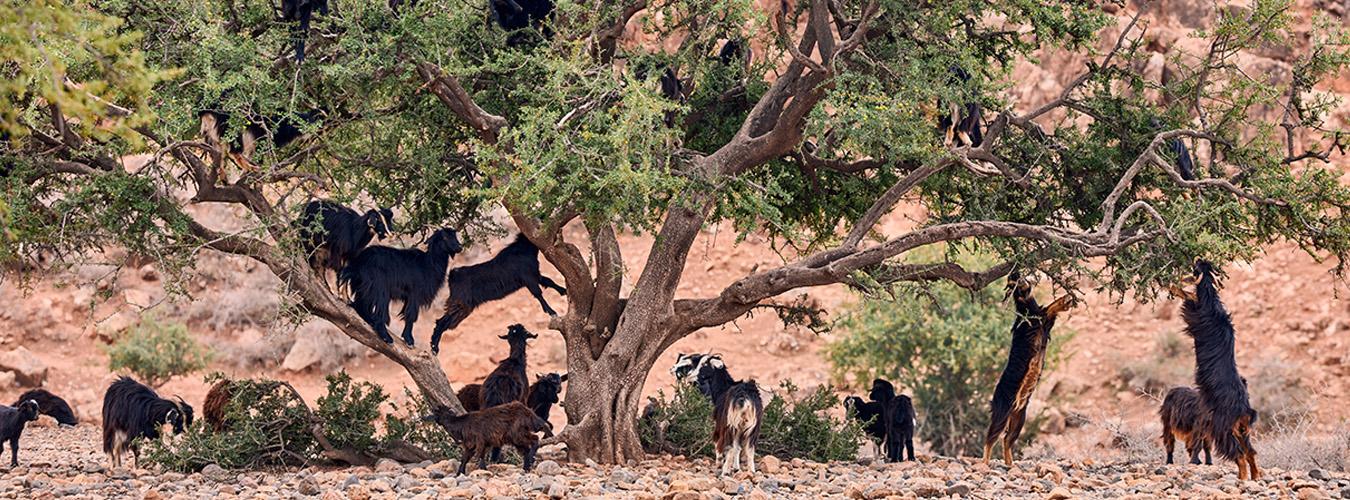
Local communities make oil and other products from argan trees, farm on the land around the trees, and rear goats who scale the short trees and eat argan nuts.
Photo:Artur Nyk/Adobe Stock
The multifaceted argan tree
The argan tree (Argania spinosa) is a native species of the sub-Saharan region of Morocco, in the southwest of the country, which grows in arid and semiarid areas. It’s the defining species of a woodland ecosystem, also known as Arganeraie, which is rich in endemic flora. It is resilient to a harsh environment under water scarcity, risk of erosion and poor soils.
This ecosystem of extraordinary beauty is not only important in terms of conservation, but also for research and socio-economic development, due to its forestry, agricultural and livestock use.
The argan tree woodlands provide forest products, fruits and fodder. The leaves and the fruits are edible and highly appreciated, as is the undergrowth, and constitute a vital fodder reserve for all herds, even in periods of drought. The trees are also used as fuelwood for cooking and heating.
The world-renowned argan oil is extracted from the seeds and has multiple applications, especially in traditional and complementary medicine and in the culinary and cosmetic industries.
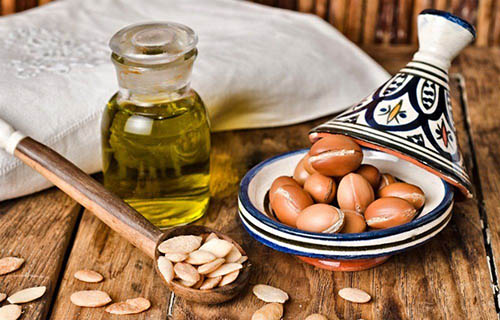
What is argan oil?
Argan oil is one of the rarest oils in the world and is hailed as the "liquid gold" of Morocco. It has multiple uses in cooking, medicines and cosmetics. Its ability to prevent cardiovascular diseases and its benefits for the skin are scientifically recognized. Rural women lead the entire extraction process through knowledge transmitted from one generation to the next.
The argan tree as a fundamental pillar for sustainable development
The argan tree is typically a multipurpose tree that supports income generation, increases resilience and improves climate adaptation, playing a very important role in achieving the three dimensions of sustainable development - economic, social and environmental - at the local level.
The sustainable argan production sector contributes to the economic empowerment and financial inclusion of local communities, especially women living in rural areas. Cooperatives are instrumental in promoting local job opportunities and can play an important role in contributing to food security and in eradicating poverty.
For centuries, the argan tree has been a mainstay of the Berber and Arab-origin indigenous rural communities, which developed a specific culture and identity, sharing their traditional knowledge and skills through non-formal education, particularly the unique knowledge associated with the traditional production of argan oil by women.
The unique argan-based agro-forestry-pastoral system uses only locally adapted species and pastoralism activities and relies on traditional water management provided by the Matifiya - a rain water reservoir carved into rock, hence contributing to climate change mitigation and adaptation, and to the conservation of biodiversity.
Background
This unique region, where argan trees have been cultivated for centuries combines agricultural biodiversity, resilient ecosystems and valuable cultural heritage. For that reason, it has gotten recognition and protection from various UN entities.
The United Nations Educational Scientific and Cultural Organization (UNESCO) designated in 1988 the endemic production area as the Arganeraie Biosphere Reserve. Also, all know-how concerning the argan tree was inscribed in 2014 on the UNESCO Representative List of the Intangible Cultural Heritage of Humanity.
Moreover, in December 2018, FAO recognized the Argan-based agro-sylvo-pastoral system within the area of Ait Souab - Ait Mansour in Morocco as a Globally Important Agricultural Heritage System.
And lastly, in 2021, the United Nations General Assembly proclaimed 10 May the International Day of Argania. The resolution, submitted by Morocco, was co-sponsored by 113 member states of the United Nations and adopted by consensus.
Follow the official UN event! (10 May, 3 pm)
The United Nations will celebrate (10 May 2023, 3 pm) the third International Day of Argania, under the theme: "Socio-economic development & sustainability of the Argan ecosystem." The celebration will aim to share knowledge and practices from the Argan production sector, in support of food security and sustainable production and consumption patterns. Follow the event on UN Web TV.
The Moroccan landscape, traditions and communities behind argan and its oil
Despite its proximity to several spots along Morocco’s tourist trail, Chtouka Ait Baha’s empty desert mountainscapes are worlds away from the colorful, bustling streets of the country’s cities. However, the relatively remote area is home to the incredible argan tree, a treasure of Morocco that provides one of the country’s most valuable exports: argan oil.
Why do we mark International Days?
International days and weeks are occasions to educate the public on issues of concern, to mobilize political will and resources to address global problems, and to celebrate and reinforce achievements of humanity. The existence of international days predates the establishment of the United Nations, but the UN has embraced them as a powerful advocacy tool. We also mark other UN observances.
